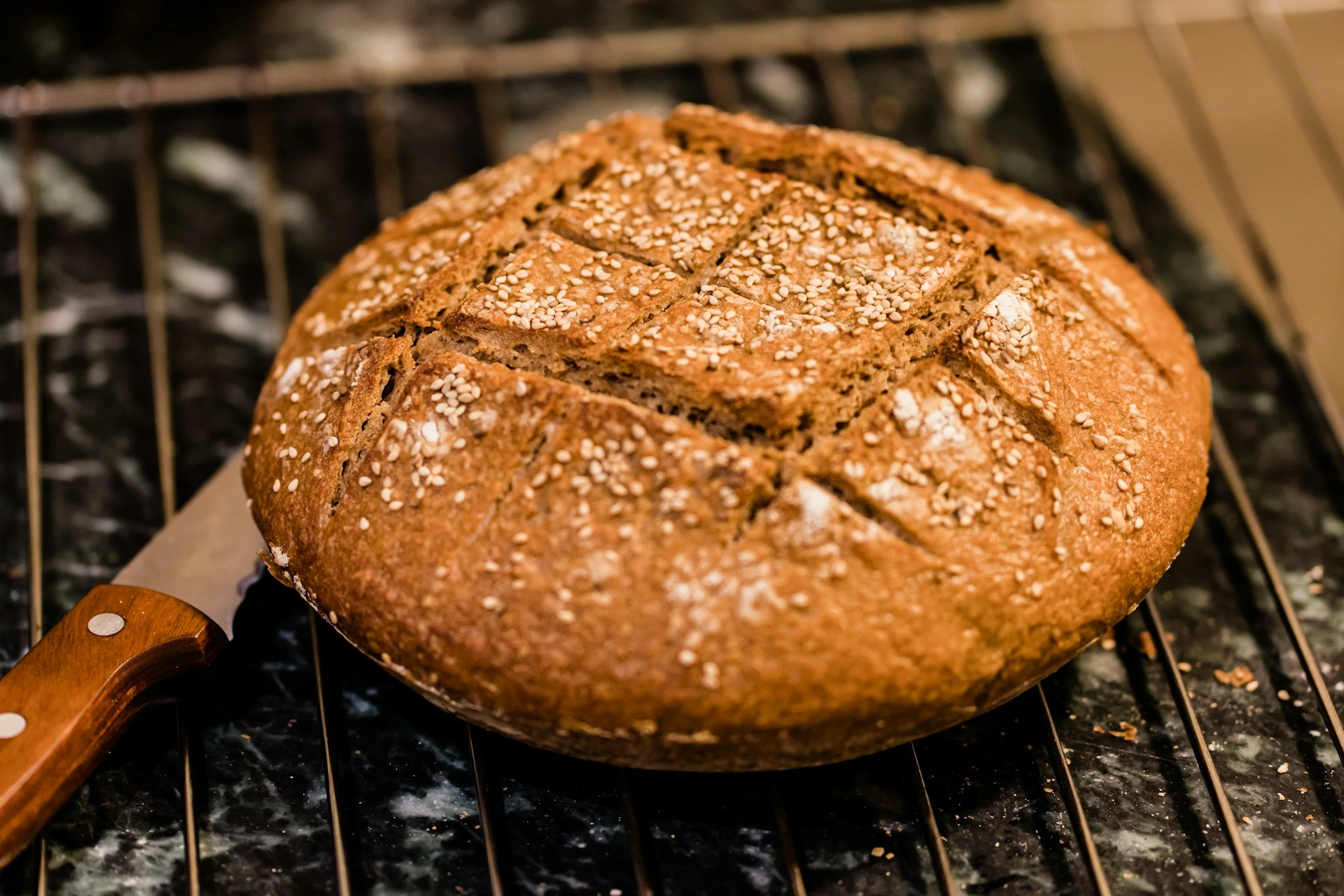Can You Make Gluten Free Sourdough? Expert Answers and Proven Tips for Success
Table of Contents
Discovering the Joy of Gluten Free Sourdough
If you’ve ever stared longingly at a crusty loaf of traditional sourdough, wondering if you could ever enjoy that same tangy, chewy perfection without gluten, you’re not alone. Many people who avoid gluten think sourdough is forever off the table—but that’s far from true.
With the right gluten-free starter and a mindful baking process, you can absolutely make delicious gluten-free sourdough bread right in your kitchen. It just requires a bit of patience, the right ingredients, and a willingness to experiment. Once you pull that first loaf from the oven, warm and fragrant, all the waiting will feel worth it.
What Makes Gluten-Free Sourdough Different?
Traditional sourdough relies on the natural gluten structure found in wheat or rye flour to create its airy texture. Gluten helps trap gas during fermentation, giving sourdough that signature lift and chewy bite.
Gluten-free sourdough, on the other hand, uses flours such as rice, buckwheat, or sorghum—all naturally gluten-free. These grains don’t contain gluten, but they still ferment beautifully when fed and maintained correctly.
| Aspect | Traditional Sourdough | Gluten-Free Sourdough |
|---|---|---|
| Starter Ingredients | Wheat or rye flour | Brown rice, sorghum, or buckwheat flour |
| Fermentation Time | 5–7 days | 7–10 days |
| Texture | Elastic, chewy crumb | Soft, slightly denser crumb |
| Flavor | Mildly tangy | Earthy, nutty, slightly sweet |
Both versions share the same soul—the slow fermentation that builds flavor, texture, and nutrition—but they differ in the structure that supports it.
How to Make a Gluten-Free Sourdough Starter
Your sourdough journey starts with the heart of the bread: the starter. Think of it as a living ecosystem that needs daily care and feeding.
Here’s what you’ll need:
- ½ cup brown rice flour (or buckwheat flour)
- ½ cup filtered water
- A clean glass jar
Step-by-Step Starter Guide
- Combine the flour and water in your jar. Stir until smooth.
- Cover loosely with a breathable cloth or lid and let it sit at room temperature.
- Each day, discard half of the mixture and feed it with fresh flour and water.
- After about a week, bubbles and a pleasant tangy aroma will appear—your starter is ready to bake.
Expert tip: Keep your starter between 70–75°F. If your kitchen is cooler, wrap the jar in a towel or place it in a warm corner.
Choosing the Best Gluten-Free Flour Blend
Flour makes or breaks your bread. You can’t rely on a single flour because gluten-free flours each have unique properties. Mixing them gives you balance in taste, structure, and softness.
Why Blending Matters
Rice flour brings a mild flavor, sorghum adds a bit of sweetness, and tapioca starch contributes elasticity. Combining these creates the texture you crave in sourdough.
| Flour Type | Percentage in Blend | Notes |
|---|---|---|
| Rice Flour | 40% | Neutral flavor, good structure |
| Tapioca Starch | 30% | Adds chewiness and rise |
| Sorghum Flour | 30% | Slightly sweet, enhances fermentation |
Recommended Blends
- Classic Base: Brown rice + tapioca + potato starch
- Rustic Style: Buckwheat + millet + cornstarch
- Hearty Flavor: Sorghum + teff + arrowroot
Preparing a flour mix in advance saves time and helps you achieve consistent results.
Your Step-by-Step Guide to Baking Gluten-Free Sourdough Bread
Once your starter is active and lively, it’s time to bake your first loaf.
Gather Your Ingredients
- 1 cup active gluten-free starter
- 1 ½ cups flour blend
- 1 ½ cups warm water
- 1 tbsp psyllium husk
- 1 tsp salt
The Process
- Mix the Dough: Whisk together the starter and water. Add the flour blend, psyllium husk, and salt. Mix until it forms a thick, sticky dough.
- Ferment: Cover and let the dough rest for 3–4 hours at room temperature. It should expand slightly.
- Shape and Rest: Gently shape your dough into a round and place it in a parchment-lined proofing bowl. Cover again and refrigerate overnight.
- Bake: Preheat your oven to 220°C (425°F). Place your dough into a hot Dutch oven, cover, and bake for 30 minutes. Uncover and bake another 25 minutes for a golden crust.
Helpful Tips
- Avoid over-mixing; gluten-free doughs don’t benefit from kneading.
- Let your loaf cool completely before slicing—it’s still cooking inside as it cools.
- For a crispier crust, mist the oven with water before baking.
Troubleshooting Common Gluten-Free Sourdough Issues
Everyone faces hiccups when learning gluten-free baking. Here’s how to fix the most common ones:
- Dough too sticky: Add a tablespoon of psyllium husk or potato starch.
- Dense texture: Increase fermentation time or use a younger starter.
- Starter not bubbling: Feed twice daily for several days to boost activity.
- Crumbly loaf: Add more water during mixing—gluten-free doughs need higher hydration.
Patience is key. Each loaf teaches you something new about your starter, your oven, and your intuition as a baker.
Why Gluten-Free Sourdough Is Worth the Effort
You might be wondering if all this effort is worth it. The answer is yes—especially if you care about flavor, health, and texture.
Gluten-free sourdough is more than just bread. It’s nutritious, satisfying, and easier to digest thanks to natural fermentation.
Nutritional Benefits
- Improved digestion: Fermentation breaks down complex starches.
- Better nutrient absorption: Natural yeasts unlock minerals in the flour.
- Lower sugar impact: Sourdough has a lower glycemic index than most gluten-free breads.
- No preservatives: Homemade sourdough is pure, fresh, and chemical-free.
When you bake your own gluten-free sourdough, you control every ingredient—and that’s powerful.
Expert Tips for Perfect Gluten-Free Bread Every Time
Small changes can make a big difference in your results. Try these expert adjustments:
- Use a kitchen scale for accuracy.
- Feed your starter consistently—skip days cause inconsistent fermentation.
- Let the dough rest longer if temperatures are cool.
- Experiment with seeds, herbs, or honey for flavor diversity.
- Always preheat your Dutch oven for even baking.
Keeping a baking journal helps you note what works best for your recipe and environment.
FAQs About Gluten-Free Sourdough
Can you make gluten-free sourdough without a starter?
Technically yes, but it won’t be true sourdough. Using commercial yeast mimics the texture, not the flavor or health benefits of fermentation.
How long does a gluten-free sourdough starter last?
Indefinitely, if you feed it weekly and store it in the fridge. It’s a living culture that thrives with care and attention.
What’s the best flour for gluten-free sourdough?
Brown rice and sorghum flours are top choices—they taste pleasant and ferment beautifully.
Can you freeze gluten-free sourdough bread?
Absolutely. Slice your loaf first, freeze it, and toast slices when ready to eat.
A Heartfelt Conclusion: Yes, You Can Make Gluten-Free Sourdough
Now you know—the answer to can you make gluten free sourdough is an enthusiastic yes. All it takes is time, the right flours, and a bit of love. The process may feel slow at first, but the reward of pulling a homemade gluten-free loaf from your oven is unbeatable.
So gather your tools, start your gluten-free starter, and step into the world of real, slow baking. You deserve bread that nourishes, satisfies, and fills your home with the comforting scent of possibility.
Ready to begin your gluten-free baking journey? Start your first sourdough starter today and share your results with your readers or followers—your success story might inspire someone else to take that first delicious step.

